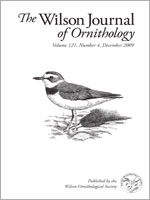We investigated seed predation and dispersal by nine Darwin's finch (Geospizinae) species, including species previously regarded as seed predators or insectivores. All nine ate fruit. Eight commonly discarded seeds, acting as short-distance dispersers. Seven defecated viable seeds, being therefore potential longer-distance dispersers. Fruit comprised the majority of dietary items in all four Geospiza species and Small Tree Finch (Camarhynchus parvulus). All except Common Cactus Finch (G. scandens) defecated intact seeds. The highest proportions of feces containing viable seeds were of Small Ground Finch (G. fuliginosa) and the “insectivorous” species Woodpecker Finch (Camarhynchus pallidus) and Warbler Finch (Certhidea olivacea). These two may be more important endochorous dispersers than other species that eat more fruit but are better seed predators. Intact seeds were found in 23% of fecal samples; 50% of the samples with intact seeds had viable seeds. The most frequently encountered intact seeds were of the tiny-seeded, fleshy-fruited Miconia robinsoniana and a sedge, Kyllinga brevifolia. Dry fruit, such as sedges and grasses, were usually crushed but occasionally found intact in feces, and might frequently be dispersed long distances. Seeds of larger-seeded, fleshy-fruited species were often discarded, but may be commonly dispersed short distances. Dispersal of plants by finches is probably more common than suggested by their predominant feeding patterns of seed predation and insectivory, and rare long-distance dispersal could be important for plant evolution and spread of introduced plants in the Galapagos Islands.
How to translate text using browser tools
1 December 2009
Darwin's Finches as Seed Predators and Dispersers
Ana Mireya Guerrero,
Alan Tye
ACCESS THE FULL ARTICLE





